North America is filled with many wonderful birds with blue beaks– in fact, there are 7 birds that you can spot with blue beaks. Have you spotted a bird with a blue beak that you’re looking to identify? Look no further than this article.
This list will list all 7 birds and help birdwatchers find and identify all birds of North America that have blue beaks with both pictures and calls.
1. Tricolored Heron
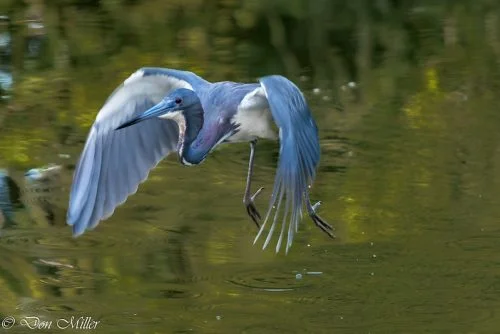
The Tricolored Heron, as its name implies, is more colorful than other herons. It has white feathers covering its neck and breast area and blue to lavender feathers on its back. Some birds have beautiful blue-gray feathers that add to their beauty.
It is also known as the Louisiana heron, is a small heron species that is native to coastal regions of the Americas.
In the Atlantic region, it has a range that extends from the northeastern United States south along the coast, through the Gulf of Mexico, and into the Caribbean. It can be found in the Pacific area from Peru to California, although it only makes non-breeding trips to the far north.
Tricolored herons are carnivores.
Most of what they eat is fish, but they also eat amphibians, crabs, gastropods, worms, leeches, spiders, and insects. The Tricolored Heron will dive farther into the water than any other heron when seeking food. Herons get more frantic in their quest to grab some prey before midnight as the sun sets and the light begins to fade.
To learn more about the Tricolored Heron you can visit: https://www.audubon.org/field-guide/bird/tricolored-heron
2. Boat-billed Heron
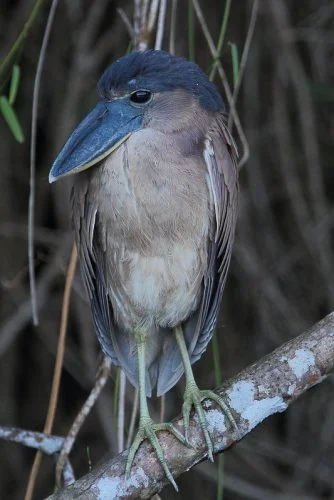
The boat-billed heron often referred to as the boatbill, is an unusual member of the heron family. it has a peculiar bill that resembles the hull of a tiny boat. The bird also has pinkish or yellowish feathers on its chest, a blue beak, black eyes, and other features.
It is a reclusive bird that stays away from both people and most other birds.
It can only be found in a small number of tropical areas in Central and South America, from southern Mexico through Bolivia and northern Argentina.
They are non-migratory birds that typically inhabit seasonal estuaries and lagoons and build their nests in mangroves.
The boat-billed heron feeds primarily at dusk and night. Among its most common victims are small fish, insects, and tiny crustaceans.
3.Red-footed Booby
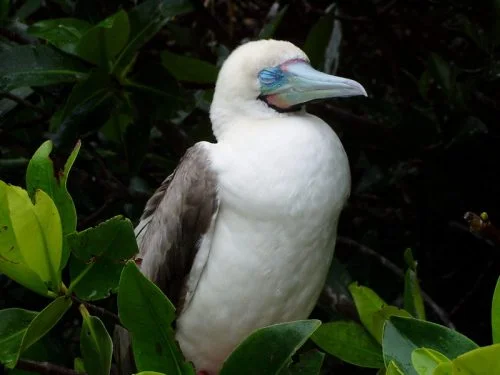
The red-footed booby is a big seabird belonging to the Sulidae family of boobies. They are easily recognized by their unique red legs and feet and light blue bill, but oddly, they come in a variety of colors. A red-footed booby can fly at speeds of up to 60 miles per hour.
This speed distinguishes boobies from other birds since they can soar quickly to great heights.
Red-footed boobies take swift dives into the water to capture prey.
They mostly eat small fish that swim in schools close to the surface, like flying fish and squid. The Red-footed Booby never carries its prey in its bill, as all other boobies do. Instead, it swallows it before taking flight.
This long-winged seabird, which can be found in tropical waters all around the world, only sometimes visits North America.
The Dry Tortugas islands in Florida are where the majority of reports are from; however, the species has also been discovered off the coast of California.
To learn more about red-footed booby you can visit: https://www.audubon.org/field-guide/bird/red-footed-booby
4. Indigo Bunting
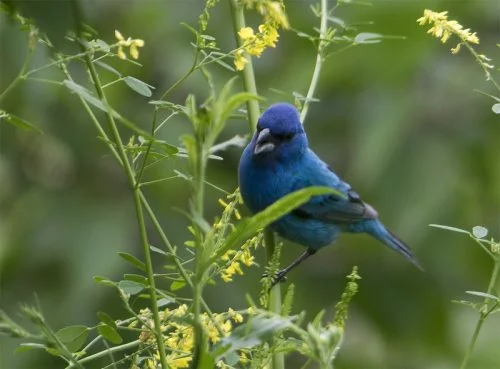
A tiny seed-eating member of the cardinal family, the indigo bunting is indigenous to the Americas. Typically, during the breeding season, the adult male has a vivid cerulean blue. Only the head is blue. black with cerulean blue margins; the wings and tail are both blacks.
During the breeding season, they consume various insects, seeds, and berries, such as caterpillars, grasshoppers, spiders, beetles, and grass seeds. They primarily eat grass seeds during the winter, although they will also take buds and insects when they are around.
Indigo buntings are widespread in the eastern part of the US. Look for them in the summer and when they migrate in the spring. They are also present in several parts of the southwest. For the winter, they move to the southernmost point of Florida, the Caribbean, Mexico, and Central America.
To learn more about the Indigo Bunting you can visit: https://www.audubon.org/field-guide/bird/indigo-bunting
5. Fulvous Whistling-Duck
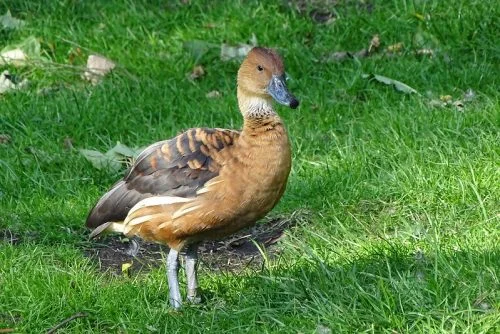
This magnificent bird first began to colonize Florida in the 1950s, making it a relatively young species there. Whistling Ducks have long legs and a long gray bill, mostly reddish brown plumage, and a striking white band across their black tail when flying, making them look more like swans and geese than ducks.
As their name suggests, fulvous whistling ducks make a loud, distinctive whistling sound. They fly with the typical whistling duck appearance of slow wingbeats and drooping legs.
The majority of its food is plant matter, including seeds, bulbs, grasses, and stems, but females may also eat animal products such as aquatic worms, mollusks, and insects as they get ready to lay eggs, which can make up to 4% of their diet.
Although the Fulvous Whistling-Duck can be found all over the world, it is only found in small numbers in the United States, primarily in the southeast.
A population lives in central Florida all year, and a seasonal breeding area is along the coasts of Texas and Louisiana in the western Gulf of Mexico.
To learn more about the Fulvous Whistling-Duck you can visit: https://www.audubon.org/field-guide/bird/fulvous-whistling-duck
6. Mexican Jay
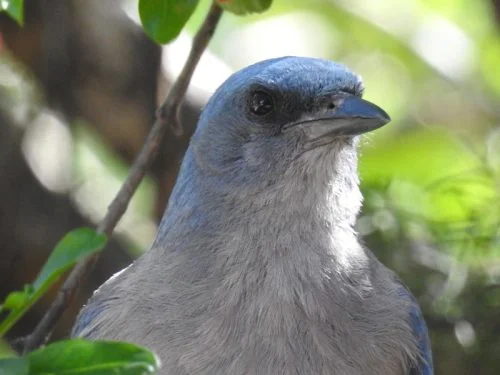
The Mexican jay is formerly known as the gray-breasted jay. It is a medium-sized passerine that is the same size as most other jays. It has a blue head, a blue-gray mantle, blue wings, blue beaks, and a blue tail, as well as a pale gray breast and underparts.
It eats many different kinds of plants and animals, but acorns and pine nuts make up a big part of its diet.
The Mexican Jay, like many other jays in the western United States, stores acorns for later use. According to one research, a single Mexican Jay could store 7,000 acorns in a single year.
It lives mostly in Mexico, but there are parts of its range that touch the United States in southeast Arizona, southwest New Mexico, and southwest Texas. With limited mobility away from breeding grounds, they are regarded as permanent residents throughout their range.
To learn more about the Mexican jay you can visit: https://www.audubon.org/field-guide/bird/mexican-jay
7. Blue Jay
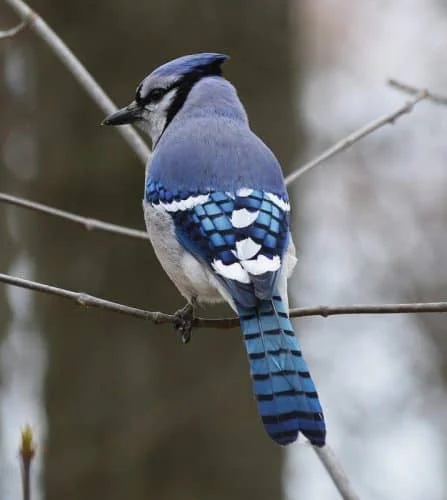
The Blue Jay is one of the most noticeable birds in eastern backyards and forests because of its loud calls and vivid plumage. It has a crest that is mostly blue with white underparts and a blue-collar around its neck. There is also a black border around the back of the crest.
Blue Jays consume a wide variety of things, such as insects, nuts, seeds, and grains that are found in trees, shrubs, and on the ground.
They also take tiny vertebrae that have been injured or died.
The longest Blue Jay ever found survived for at least 26 years and 11 months, even though its average lifespan is thought to be between 5 and 7 years.
The majority of eastern North America is home to this bird year-round.
They’re more abundant near forest edges than in deep forests. They are common in suburban and city areas, especially where oak trees or bird feeders are.
To learn more about the Blue Jay you can visit: https://www.audubon.org/field-guide/bird/blue-jay
